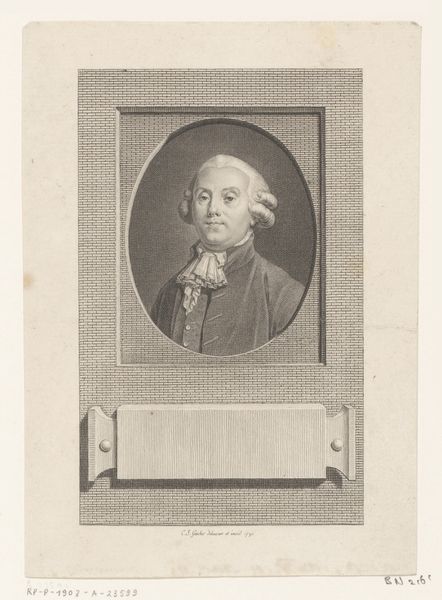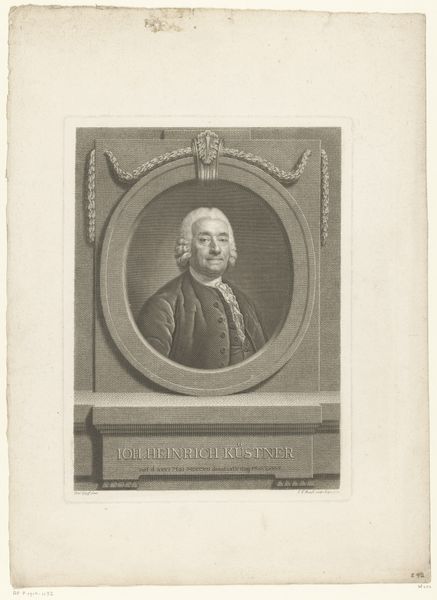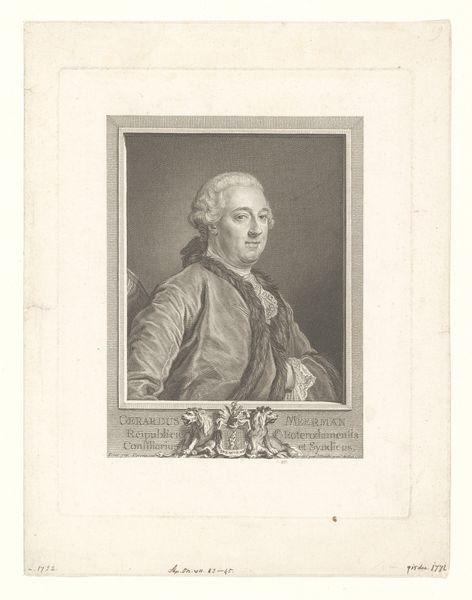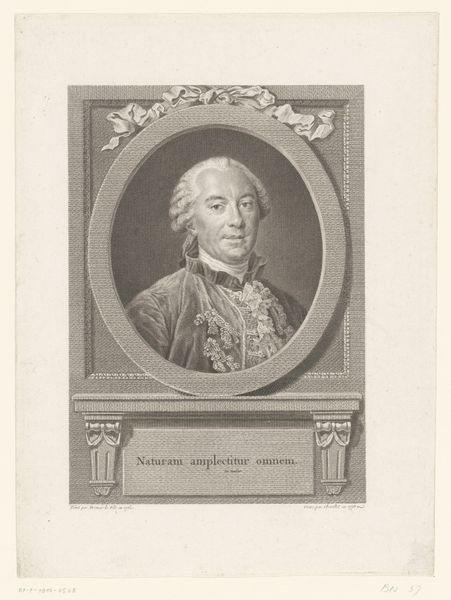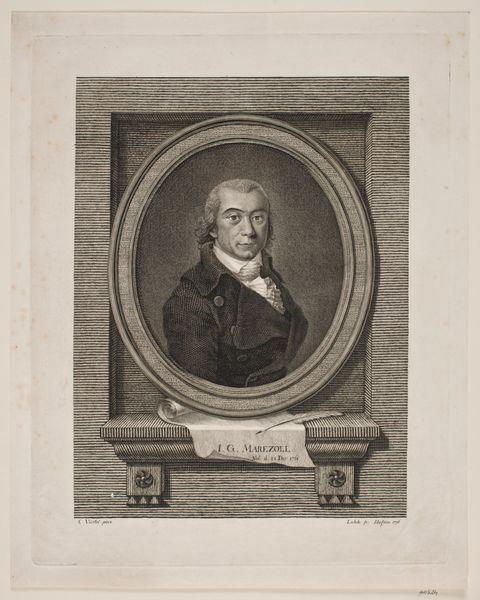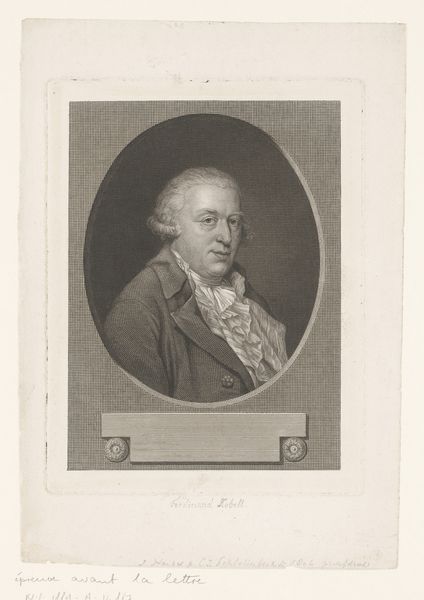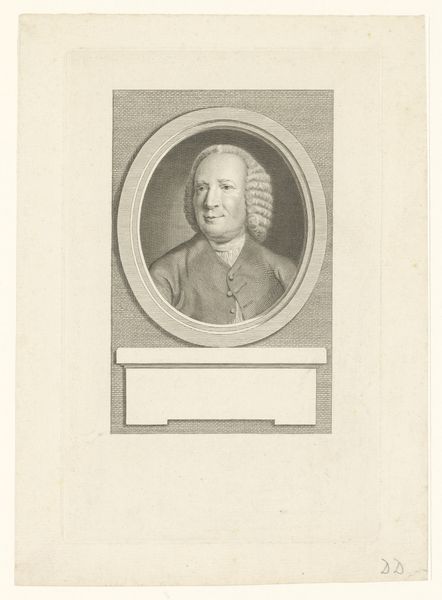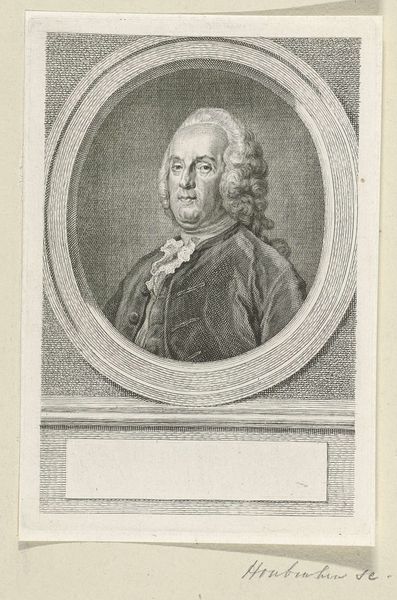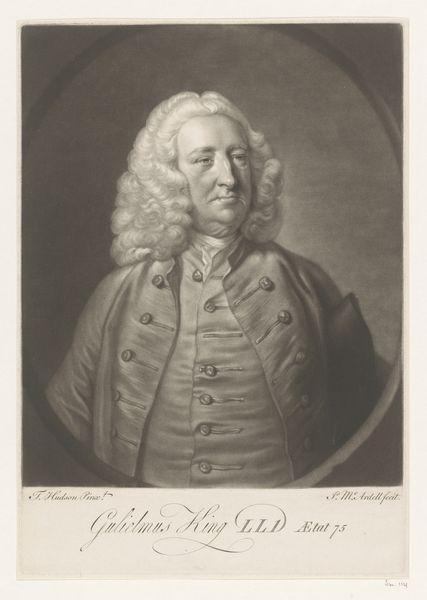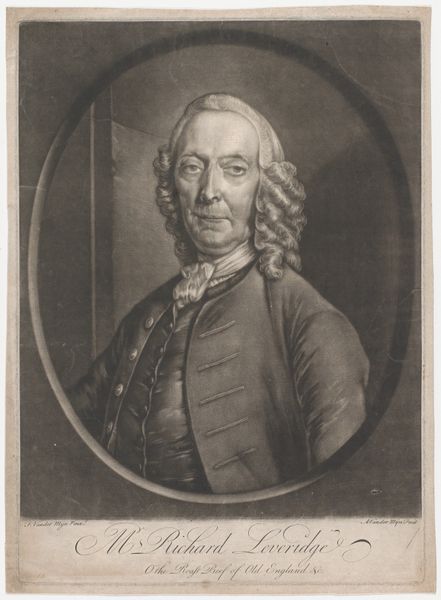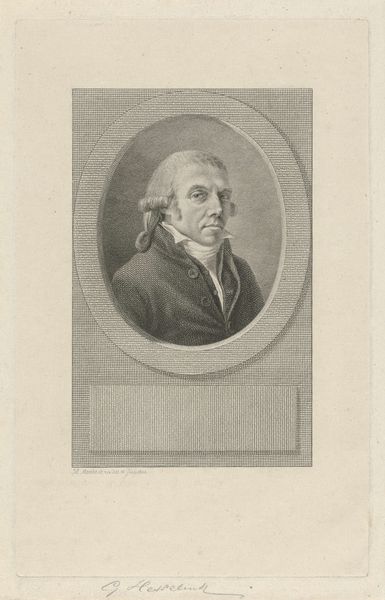
engraving
#
portrait
#
baroque
#
old engraving style
#
line
#
academic-art
#
engraving
Dimensions: height 179 mm, width 135 mm
Copyright: Rijks Museum: Open Domain
Jacob Houbraken created this portrait of Philip Zweerts using engraving, a printmaking technique where lines are incised into a metal plate to hold ink. Look closely, and you can see the matrix of fine lines that give this image its subtle gradations of tone. Engraving was a highly skilled craft, demanding years of training to master the use of burins and other specialized tools. The engraver would have worked laboriously, translating an original painting into a new visual language of hatching and cross-hatching. This process transforms a fluid medium like paint into a precise, repeatable image. The resulting print could then be circulated widely, making portraits accessible to a broader public. In that sense, the engraving democratized image-making, disseminating likenesses beyond the elite circles who could afford painted portraits. We might see this as an early form of mechanical reproduction, a precursor to photography. It's a potent example of how artistic skill and technical innovation intersect with social and economic forces. Ultimately, this image is a testament to the engraver's craft, and the changing landscape of image production in the 18th century.
Comments
No comments
Be the first to comment and join the conversation on the ultimate creative platform.
